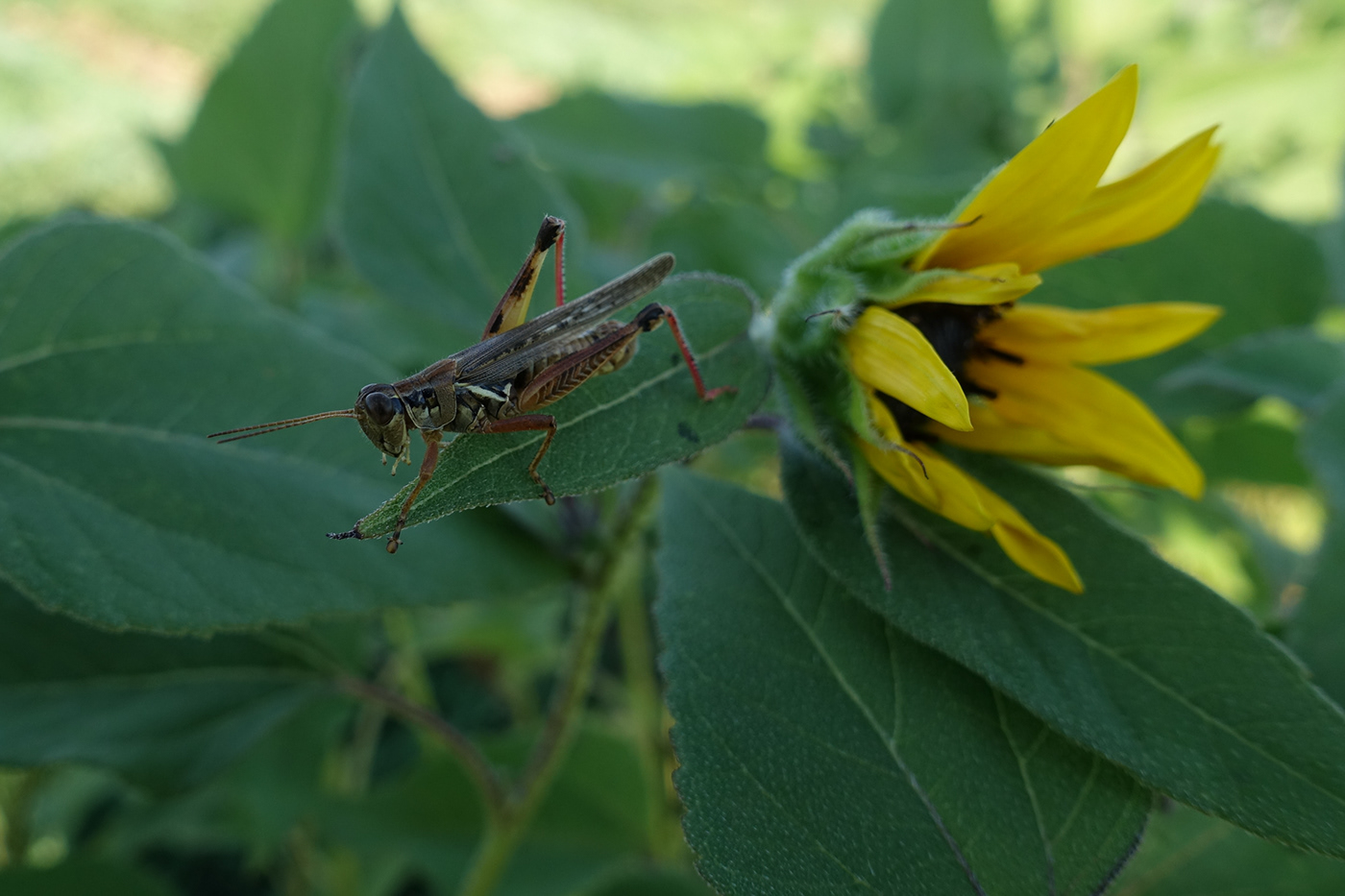
Marsh meadow grasshopper & Snowy tree cricket 🦗🦗🦗
In 2022, I photographed many Marsh meadow grasshopper and a single green grasshopper (Snowy tree cricket). They were sometimes on a leaf, a flower or on the ground. Sometimes they would leave the photoshoot while I took pictures of them.
In August, I was walking in the park and a cricket jumped out of me. I looked at him and I remember talking to him. As I photographed him, for a few seconds, with his left paw resting on a leaf and a right paw on his hip, he contemplated nature. I enjoyed that brief moment, because he wasn't afraid of me.
On September 9, I photographed two crickets on top of a fence. To climb this plexiglass surface, the crickets jump and cling to the cavities of the few screws. I saw two grasshoppers jump several times, but without success. This must require a lot of energy from them.
And, there is this cricket that I photographed on October 23rd. Hanging on a dead stem, it looked like he was exercising. If you look at the pictures, this cricket managed to "bend" this dead branch slightly by pulling with all his might. In one photo, he looks pleased with himself looking at me.
All photos are in chronological order. Good viewing!
Marsh meadow grasshopper (Criquet des champs en français). These crickets may be various shades of yellow, green and brown. Their legs are often reddish, with black joints on the hindlegs.
The males are smaller than the females: 12 to 20 mm long for the males and 20 to 35 for the females. The males’ wings are long, reaching to the tip of the abdomen, while the wings of the flightless females cover only three-quarters of the abdomen. They have fairly short, thread-like antennae.
After mating, the female lays a mass of four to six brown eggs in the soil. The eggs overwinter and hatch the following spring (or up to three years later in mountain populations). The nymphs pass through several moults over about 30 days before reaching adulthood.
These grasshoppers are found in all Canadian provinces and most American states, except in the southeast. For more information, click on the links in blue.










✽✽✽✽✽




Snowy tree cricket
Snowy-tree-crickets are pale green, with an orange-yellow marking on the top of the head and long antennae. There are two dark spots at the base of the antennae. The wings are transparent, with fine white veins. The males have wider wings than the females. These insects are 13 to 15 mm long.
Life cycle. After mating, the female lays her eggs in holes that she makes in tree bark. The eggs are laid in fall and the eggs hatch the following spring. These insects undergo gradual metamorphosis: the young nymphs resemble adults and grow wings after a series of moults. The nymphs reach the adult stage in mid-summer.
Geographic distribution. They are found throughout the United States, except in the southeast and Montana. In Canada, they are found in British Columbia, Ontario and Quebec.


✽✽✽✽✽








✽✽✽✽✽


Look at the cricket on the flower on the left.
































